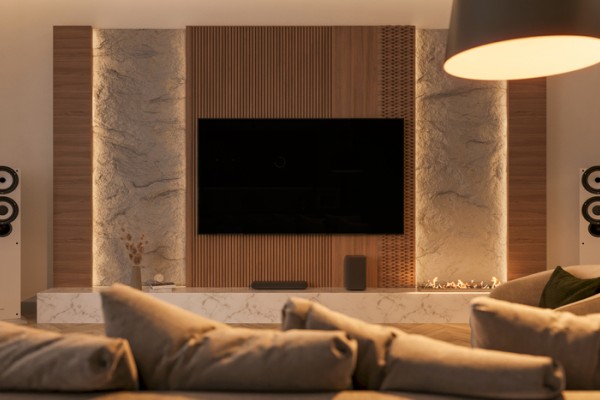
A home theatre should be your escape—loud explosions, quiet dialogue, immersive soundscapes—all without disturbing the rest of the house or your neighbours. That’s where soundproofing comes in.
Whether you’re building from scratch or renovating a spare room, smart soundproofing creates a better experience inside and protects the peace outside.
Why soundproof?
Without proper soundproofing, sound from your home theatre can leak into adjoining rooms, hallways or even outside. Worse still, outside noise can creep into your movie nights. Proper insulation and construction techniques help contain audio, reduce echo and improve acoustic performance overall.
Pairing your soundproofing with the right lighting and seating will complete your cinematic setup.
Start with the walls
Walls are the first line of defence in any soundproofing strategy. Typical plasterboard walls with timber studs do little to block low-frequency sounds like bass. To improve wall performance:
- Use acoustic-rated plasterboard or double layers of standard plasterboard with a soundproofing membrane between
- Staggered stud framing or double-stud walls to physically separate wall surfaces
- Add acoustic insulation between wall cavities to absorb airborne sound
You don’t need to completely reconstruct the room—strategic additions can go a long way during renovations.
Don’t forget the ceiling and floor
Sound doesn’t just move sideways—it travels up and down. Ceilings can be soundproofed using resilient channels or acoustic hangers to decouple plasterboard from joists. For even better results, add acoustic insulation between floor levels.
As for floors, carpet is your friend. Soft floor coverings help absorb sound and reduce echo. If your home theatre is on an upper floor, consider acoustic underlay to reduce footstep noise for rooms below.
Need more guidance? See our article on the thermal and acoustic performance of different materials.
Choose the right doors and windows
Standard hollow-core doors let sound leak through easily. For best results:
- Install solid-core doors with acoustic seals or drop-down thresholds
- Avoid glass doors altogether, or use acoustic laminated glass
- If windows are necessary, choose double glazing with a soundproofing air gap
Also make sure door and window frames are sealed tightly—sound can pass through even the smallest of gaps.
Add acoustic treatments
While soundproofing blocks sound from entering or leaving the room, acoustic treatments improve the way sound behaves inside the room. For that rich cinema-quality audio, consider:
- Acoustic panels on walls to reduce echo
- Bass traps in corners to control low frequencies
- Absorptive ceiling tiles or fabric-covered diffusers
These elements don’t have to look industrial. Many acoustic panels now come in stylish finishes that match your décor.
Ventilation without the noise
A well-sealed home theatre needs proper ventilation. The challenge is doing it without introducing unwanted sound pathways.
Consider:
- Ducted vents with acoustic lining
- Ventilation systems that isolate airflow from noise sources
- Avoiding shared ductwork with bedrooms or quiet zones
Summary
Soundproofing your home theatre isn’t just about noise control—it’s about creating the right atmosphere for movies, games or music. With careful planning and the right materials, you can enjoy full-volume cinema sound without compromise.
Looking for more ways to upgrade your media room? Explore our guides on home theatre lighting, seating and soundproofing techniques to complete your setup.





